Shifting the alluvial earth along the Red River into specialised farming areas which bring about high economic value has proved a sound policy in implementing the programme on new rural construction in Me Linh District, Hanoi. The establishment of two specialised areas for growing flowers in Van Khe Commune and safe vegetables in Trang Viet Communes are vivid examples of the successful shift.
A high-tech flower growing area formed in alluvial soil
Visiting the 100ha fields of different varieties of flowers in Van Quan Village, Van Khe Commune we could not imagine that it was once an alluvial area of reeds nearby the Red River. Since implementing the programme on new rural construction with a shift of agricultural land, Van Khe has become famous for being one of the largest specialised flower growing areas in Hanoi.
Talking with us, Nguyen Van Nhu, Deputy Chairman of Van Khe Commune People’s Committee said that due to rapid urbanisation, the commune’s agricultural land has sharply decreased to 100ha from 300ha, thereby many families did not have land for agricultural production. To settle this issue, the commune granted a license to the locals to reclaim alluvial land along the banks of the Red River. During the first days of farming on the newly-reclaimed land, the farmers faced difficulties in watering their crops. Some families had to drill deep into the ground, about 18m-25m, to create wells for watering. Despite initial difficulties, the locals found ways to solve the rising issues and keep improving the soil. As a result, the present-day flower area was formed and now strongly develops, bringing the farmers high income.

A field full of blossoming Chrysanthemums in Me Linh District. Photo: VNP’s File

The Dutch lily field in Me Linh District in its first harvest. Photo: VNP’s file
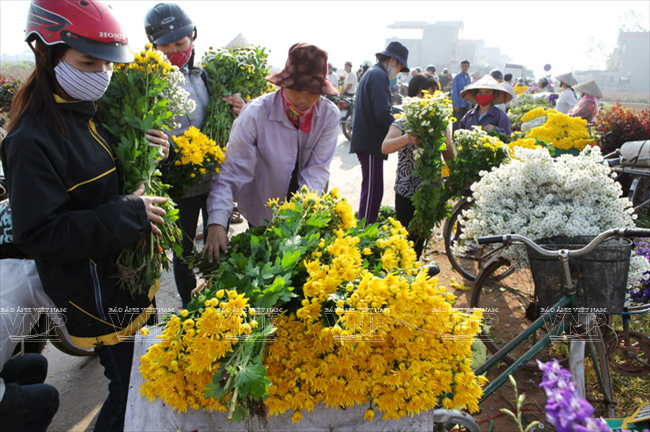
Close to Tet Holiday, traders from Hanoi and other provinces pour into Me Linh to buy flowers. Photo: VNP’s file |
According to the commune’s statistics, there are about 500 out of 800 households growing flowers and each owns a farm of at least 1,800m2 and even 17,200m2. Some of them can earn hundreds of millions of dong each year. To make flowers become a spearhead plant in the agricultural plant restructure, the communes has paid much attention to expanding the flower growing area and importing more new varieties of flowers from France and Italy which are now grown on a trial basis.
A safe vegetable growing village near the Red River
We left the flower growing village in Van Khe Commune and went along the Red River for about three km to arrive in Dong Cao Village, Trang Viet Commune which shares the same terrain with Van Khe Commune. Thanks to finding a sound direction in shifting agricultural plants, it is now famous for cultivating safe vegetables in Hanoi.
According to Dam Van Thin, Deputy Chairman of Trang Viet Commune People’s Committee, the total agricultural land in this commune is made up of alluvial soil. Prior to the year of 2000 the locals mainly grew mulberries for raising silkworms, bananas and some plants of low economic values so the land was not cultivated effectively. Seeing some successful vegetable growing models in the commune, the locals started cultivating in alluvial land and received profits beyond their expectations. Since then the locals have specialised in growing safe vegetables on a total area of 200ha, providing for not only Hanoi but also neighbouring provinces and cities, such as Hai Phong, Thai Nguyen and Phu Tho. Each year, the farmers have 3-4 crops and earn about 200-300 million dong after expenses.
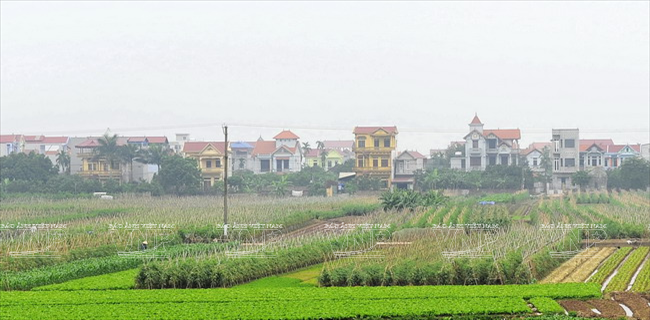
Shifting alluvial soil to specialised fields of high economic yield
has changed the rural area of Van Khe Commune. Photo: Thong Hai/VNP
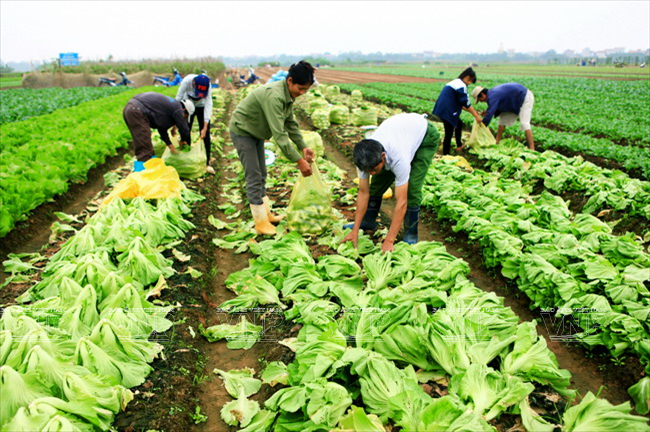
Winter mustard greens grown in Van Khe Commune are bought right at the field. Photo: Van Quyen/VNP
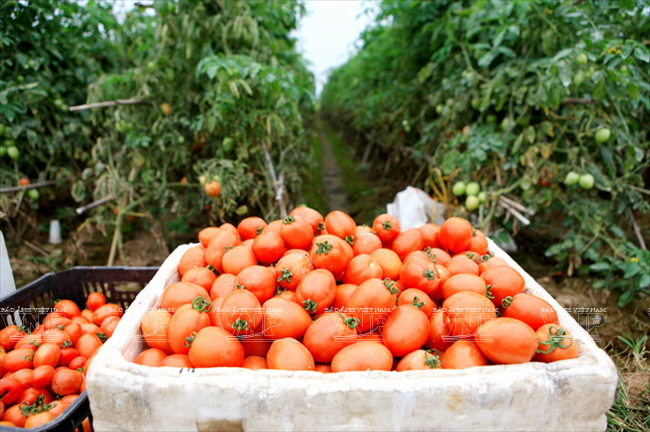
Tomatoes harvested from fields in Van Khe Commune. Photo: Van Quyen/VNP
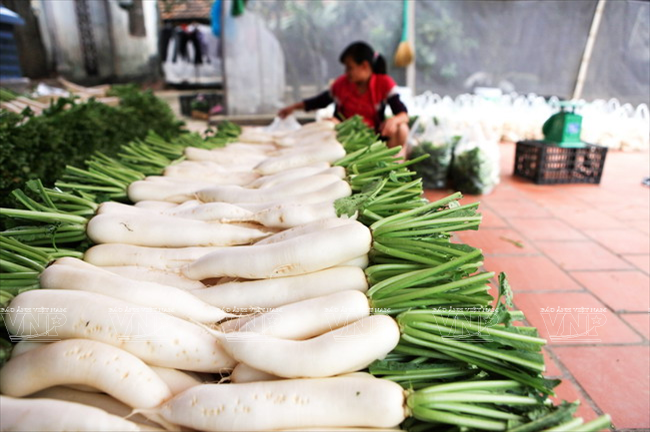
Harvested white turnips are cleaned before packaging
at a vegetable processing household in Van Khe Commune. Photo: Van Quyen/VNP |
The commune also established Dong Cao Safe Vegetable Cooperative and was granted a protective certification for their safe vegetables which will allow them to be sold at a higher price and gain increased trust from the customer.
To further develop the model of growing safe vegetables, the commune has officially planned one of the four communes nearby the Red River to implement the programme on new rural construction since late 2014.
Van Khe and Trang Viet Communes show their advance in agricultural plant restructure, one of the important criteria which serves as a strength and firm foundation to create breakthroughs in the implementation of new rural construction.
Story: Thao Vy - Photos: Van Quyen, Thong Hai& & VNP’S Files